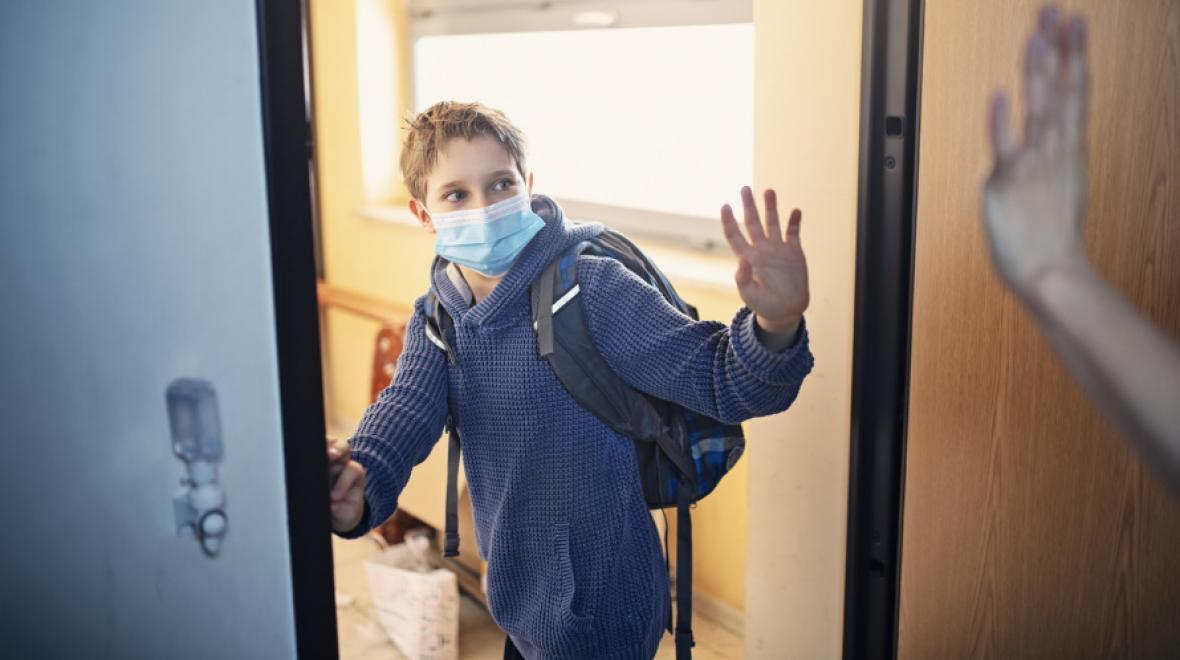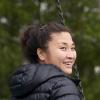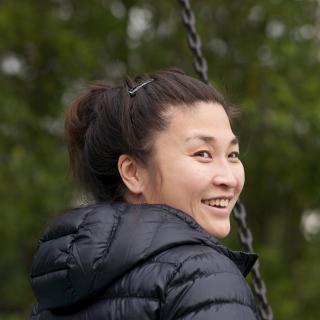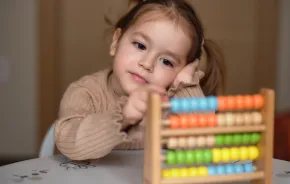
Local schools are slowly reopening again due to a recent emergency proclamation that requires all area schools to provide an in-person learning option (at least 30 percent of instruction time) by April 19, 2021.
Several districts have already invited students back under various hybrid-learning structures. We spoke to three local families about the return to in-person school to see how it’s going.
How a local Native American school responds to the pandemic
Amanda Perez-Ramirez is mom to six children, all of whom attend Chief Leschi Schools. As of mid-March, her two middle schoolers and high schooler remain at home doing distance learning while her three elementary-school-aged children have returned to in-person learning. The elementary school is in session Tuesdays through Fridays. Mondays are reserved for extra one-on-one time with teachers, as needed or prescribed by individual learning plans, or time to complete asynchronous assignments.
Perez-Ramirez says that her kids enjoy being back, as they missed the socialization. “They’re ready to get to class each morning. The teachers tell me great things about them. They’re present and ready to learn, even with masks.”
Chief Leschi Schools is operated by the Puyallup Tribe and serves members of the Tribe along with other students of Native American heritage throughout Pierce County.
Perez-Ramirez praises the district for its response to the pandemic. The district was quick to distribute laptop computers to students last spring when schools were first closed. Staff also delivered school assignments along with breakfast and lunch meals each weekday. These services and outreach made all the challenges the pandemic brought about easier to handle, she says, especially as her youngest also needed an evaluation done for his IEP. “They got his IEP evaluation done over the summer and he got right into it,” she says.
All in all, distance learning never posed many problems for her family after they navigated the initial technology learning curve. “The older kids helped the little ones,” she says. “It was a learning experience for all of us. I think they all did fairly well. They still like it, but they miss the socializing part.”
Perez-Ramirez is satisfied with all the safety and hygiene protocols that have been implemented at the school, “I really like the process of how they’re doing things,” she says. “I was worried about safety a little. I work at the school, too, so I see how the routine goes. It exceeded my expectations for safety measures. They have people cleaning every 30 minutes.”
Perez-Ramirez says she never felt compelled to look outside the Tribe for education options this past year. “Culturally, we’re a tightknit community,” she explains. “In the Native American community at school, we feel really connected with each other.”
She is also hopeful for the future: “I hope that we can go back to normalcy this coming September,” says Perez-Ramirez. “They’ve been upping the vaccine for a while now in our Native community. I hope we can go back in person, possibly without masks, but that’s okay if not, too.”
An essential worker on co-parenting two kids during the pandemic
Theresa Lloyd works in assisted living, so for more than most, the past year has been characterized by fear and stress. She has two sons, one in elementary and the other in junior high in the Puyallup School District. Both kids transitioned to a hybrid-learning program in February. They now have in-person school for two days a week and remote learning for the remaining three days.
While Lloyd is happy for the kids to be back, she is a little disappointed by the amount of time the boys still have to learn on a computer at home. “I expected the week to be more full,” she says.
Despite all the new COVID-19 protocols, she says her sons are taking all of the changes in their stride. “The masks are frustrating, but they don’t mind much. My youngest is proud his classroom was recognized for always wearing their masks and distancing. They are happy to have some socialization and they recognize the importance of minimizing risk to enjoy it safely.”
Being back in school, even part-time, is a big improvement on full-time distance learning. “The teachers did their best but the children didn’t thrive with distance learning,” says Lloyd. “They felt isolated, depressed, stressed and behind in their schoolwork. Luckily, they share time between my home and their dad’s. At both houses, they have a stepparent who was either able to stay home with the kids or work from home. Having at least one trusted adult in the house has made a big difference for them, and I’m grateful they have that.”
Communication has been key for her family this year. “Co-parenting with their father became more crucial. We’ve had to communicate a lot more to make sure there is a semblance of consistency for them at each household, and to address mental health and academic concerns as they come up. Parenting is always a full-time job, but the pandemic definitely increased the workload.”
The potential for falling ill is never far from Lloyd’s mind, though she has been able to get vaccinated as a priority tier. “The fear I’ve lived with the past year has caused immense stress on myself and my family. Our entire life was uprooted, and yet I remind myself, and them, that we are the lucky ones,” she says.
Despite the hardships of the past year, Lloyd is feeling more positive about the future. “I hope to see schools open to their normal schedule and capacity by fall, and I would like to see the same at the assisted living facility where I work,” she says. “I’m grateful for my vaccine and I’m more hopeful today than I have been in 12 months.”
A local mom who is relieved to see her kid skipping to school
ParentMap Editorial Assistant Devon Hammer was all set for her now-6-year-old son to begin kindergarten this school year in Maple Valley's Tahoma School District. When she learned he would not have in-person instruction, at least at the beginning of the year, she had what she refers to as a minor mental breakdown. “My son is an active and very social kid, and he has always done better getting out and about rather than being stuck at home. He was so ready. I knew homeschooling wasn’t a good fit for us. I looked at a few Montessori schools but some were already full and it was going to be expensive. I ultimately decided to keep him enrolled at the public school and try virtual learning,” says Hammer.
As she expected, virtual learning didn’t suit him. “With a lot of coercing, we were able to at least get him to do the Zoom meetings every day,” says Hammer. “We didn’t really do anything beyond that. He fought my husband and I every time we tried to have him do the asynchronous learning. It just wasn’t worth our family’s sanity to force it.”
Tahoma Schools began to offer hybrid learning on Feb. 1, and Hammer’s son has enjoyed being back in school. “He has never once complained about having to get his attestation screening scanned or wearing masks. He doesn’t know any different. He is such a happier kid being in school.”
Hammer’s son goes to school Mondays through Fridays for two and a half hours each day. The district staggers morning and afternoon sessions, and students are given asynchronous work to complete at home.
Hammer credits the school district for staying ahead of cases to minimize the spread of the coronavirus. “It ended up being better than expected. He literally skips down the street every day after getting off the bus. The balance it has brought our family is something I hope every family is offered soon. The school has had a couple of students test positive for COVID-19, but I expected that. It is handled quickly and responsibly and procedures are followed. We have a free testing site for our school district which I think helps catch cases early.”
Hammer is cautiously optimistic about the fall. “I am mentally prepared for a modified schedule in case things go in a different direction. I do believe they will go in person in some capacity though, regardless, and that is what is most important.”
A parent on getting back to normal and back to work
We spoke with a local mom* from Buckley with a first-grader and a second-grader attending the White River School District in Buckley, Washington. Both her children started a hybrid learning program in mid-January. While safety concerns remain a top consideration for her, Zoom classes were not working at home. “It was a tough decision, but I feel pretty comfortable with how [the school district is] handling the COVID-19 stuff,” she says. “It’s a newer school and they have the resources.”
Her first-grader attends school all day Tuesdays through Fridays for extra support, while her second-grader is in class from 12:45 p.m. to 3:20 p.m. While the focus on her younger daughter’s academic capability is appreciated, she says at this point she just wants to make sure her daughter is happy at school. “I’ve talked to the school to ask about what her day is like, and as long as she’s happy, I’m happy.” With in-person learning, her first-grader “is doing better in school, but it’s really hard for me, a usually very involved parent, to not be able to go in the building and see what it’s like in there.”
Meanwhile, her older child wishes she could go all day. “I kind of feel like she’s missing out on learning because she’s capable of way more, but it’s just not offered to her,” she says.
She is ready for her kids to go back to full time after this past difficult year. For her, the challenges of distance learning were tempered by the extra time — complete with extra hugs and kisses — she got to spend with her children at home.
“As things are returning to normal, I’m also beginning to go back to work. I’m happy I got this extra time with them, but I hope they go all day next year — for their sake and as long as things continue to be safe for them to do so.”
*Editor's note: This Seattle-area mom preferred to remain anonymous.











